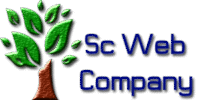Digital Experience
All Service
- Development
- UI/UX Designing
- Digital Marketing
- Data Analysis
- Cyber Security
- Digital Experience
- Manage It Service
- Graphic Designer
- Motion Graphics
- Photography Designer
- Software
- Videographer
- Server Administrator
- Photography Designer
- Database Backup
- Live Broadcast
- Network Administrator
- Social Media
- Website Repair and Build

🌐 Digital Experience: Designing for Connection, Engagement, and Impact
In today’s hyperconnected world, digital experience (DX) is more than just a buzzword—it’s the foundation of how users interact with brands, services, and technology. From websites and mobile apps to virtual assistants and immersive platforms, digital experience defines the quality, consistency, and emotional resonance of every digital touchpoint.
🔍 What Is Digital Experience?
Digital experience refers to the total interaction a user has with a brand or service across digital channels. It encompasses usability, design, content, performance, personalization, and emotional engagement. A great digital experience is seamless, intuitive, and memorable—turning casual visitors into loyal users.
🧠 Why Digital Experience Matters
• User Retention: A smooth, engaging experience keeps users coming back.
• Brand Perception: Design and functionality shape how users perceive your brand.
• Conversion Optimization: Better experiences lead to higher sales, sign-ups, or engagement.
• Customer Satisfaction: Reduces frustration and builds trust.
• Competitive Advantage: Differentiates your brand in crowded digital markets.
🛠️ Key Elements of a Strong Digital Experience
1. User Interface (UI) Design
Clean, intuitive layouts with responsive elements and visual hierarchy.
2. User Experience (UX) Strategy
Research-driven workflows, accessibility, and frictionless navigation.
3. Content Quality
Clear, relevant, and engaging copy tailored to user needs and context.
4. Performance & Speed
Fast-loading pages, optimized assets, and minimal downtime.
5. Personalization
Dynamic content, recommendations, and adaptive interfaces based on user behavior.
6. Omnichannel Consistency
Unified experience across web, mobile, email, social media, and apps.
7. Accessibility & Inclusivity
Design that accommodates diverse users, including those with disabilities.
🏢 Industry Applications
Retail & E-Commerce
• Personalized product recommendations
• Seamless checkout and mobile-first design
• AR/VR try-on experiences
Finance & Banking
• Secure, intuitive mobile apps
• Real-time dashboards and alerts
• AI-powered customer support
Healthcare
• Telemedicine platforms with intuitive UX
• Patient portals with secure access
• Data-driven personalization for care plans
Education & E-Learning
• Interactive course platforms
• Gamified learning experiences
• Adaptive content delivery
Travel & Hospitality
• Dynamic booking systems
• Location-based personalization
• Immersive virtual tours
Media & Entertainment
• Personalized content feeds
• Multi-device streaming experiences
• Interactive storytelling formats
📊 Measuring Digital Experience
• Net Promoter Score (NPS)
• Customer Satisfaction (CSAT)
• Conversion Rate
• Bounce Rate & Session Duration
• User Journey Mapping
• Heatmaps & Click Tracking
🧰 Tools & Platforms That Enhance Digital Experience
• Adobe Experience Cloud – Enterprise-level personalization and analytics
• Figma / Sketch – UI/UX design and prototyping
• Hotjar / Crazy Egg – Behavior analytics and heatmaps
• Google Optimize – A/B testing and personalization
• Contentful / Strapi – Headless CMS for flexible content delivery
• Salesforce Experience Cloud – Customer-centric digital ecosystems
• Webflow / Wix Studio – No-code platforms for responsive design
🚀 Future Trends in Digital Experience
• AI-Driven Personalization
• Voice & Gesture Interfaces
• Augmented Reality (AR) Integration
• Emotion-Aware Design
• Privacy-First Experience Architecture
• Digital Twins for UX Simulation
Why Choose Our ScWebCompany?
Tech Services
Lorem Ipsum is simply dummy typesetting industry.
It Consulting
Lorem Ipsum is simply dummy typesetting industry.

Our Few Benefits
Nam vel lacus eu nisl bibendum accumsan vitae vitae nibh. Nam nec eros id magna hendrerit sagittis.
Namnec Eros Id Magna Hendrerit
- Nibh. Nam nec eros id magna hend
- Vitae nibh. Nam nec eros id magna he
- Nam nec eros id magna
Is My Technology Allowed On Tech?
In today’s fast-paced digital landscape, innovation thrives on collaboration and accessibility. But before launching your product or service on a tech platform, it’s essential to ask: Is my technology allowed here? At Tech, we welcome a wide range of technologies — from cutting-edge software tools and hardware solutions to AI-driven platforms and IoT devices. However, to ensure safety, compliance, and a positive user experience, all submissions must meet our core eligibility criteria: ✅ What We Accept • Legally compliant technologies that respect intellectual property rights and data protection laws. • Secure and stable solutions that do not compromise platform integrity or user privacy. • Innovative tools that contribute to the tech ecosystem — including apps, APIs, plugins, and frameworks. • Ethical AI and automation that align with responsible development standards. 🚫 What We Don’t Allow • Technologies that promote malware, spyware, or unauthorized surveillance. • Solutions that violate user rights, safety standards, or platform policies. • Products with unresolved security vulnerabilities or lacking proper documentation. How to Check If You’re Eligible If you're unsure whether your technology qualifies, we recommend reviewing our submission guidelines or contacting our support team. We’re here to help you navigate the process and ensure your innovation gets the visibility it deserves.
How to Soft Launch Your Business?
A soft launch is a strategic way to introduce your business to the market with minimal risk and maximum learning. Instead of going all-in from day one, you test your product or service with a limited audience, gather feedback, and refine your offering before a full-scale launch. 🚀 Why Choose a Soft Launch? - Minimize risk by identifying issues early - Gather real user feedback to improve your product - Build anticipation before your official launch - Test operations and workflows in a controlled environment 🧩 Key Steps to a Successful Soft Launch - Define Your Goals - Are you testing product-market fit, pricing, or user experience? - Set clear KPIs to measure success. - Choose a Target Audience - Select a small, relevant group of users or customers. - Consider loyal followers, beta testers, or local communities. - Prepare a Limited Offering - Launch with a simplified version of your product or service. - Focus on core features and value. - Collect Feedback Actively - Use surveys, interviews, and analytics to understand user behavior. - Be open to criticism — it’s your roadmap to improvement. - Refine and Iterate - Address bugs, usability issues, and customer concerns. - Polish your branding, messaging, and delivery. - Plan Your Full Launch - Use insights from the soft launch to shape your marketing strategy. - Build momentum with testimonials, case studies, and early success stories. 💡 Pro Tip: Treat your soft launch as a learning lab — not a final performance. The goal isn’t perfection, but progress.
How to Turn Visitors Into Contributors?
Every thriving digital platform starts with a simple goal: turn passive visitors into active participants. Whether you're building a creative hub, a tech community, or a collaborative workspace, encouraging contribution is key to long-term growth and engagement. 🌱 Start With a Welcoming Environment - Design for clarity: Make it easy to understand what your platform is about and how users can get involved. - Showcase community impact: Highlight how contributions shape the platform — through featured posts, user stories, or visible metrics. - Use inclusive language: Speak to beginners and experts alike. Avoid jargon that might alienate newcomers. 🎯 Lower the Barrier to Entry - Offer simple onboarding: Provide step-by-step guides, tooltips, or welcome messages that explain how to contribute. - Gamify the experience: Use badges, points, or progress indicators to reward first-time actions. - Create starter tasks: Suggest small, manageable ways to contribute — like commenting, sharing feedback, or uploading a single item. 🤝 Build Trust and Recognition - Acknowledge contributions publicly: Feature top contributors, celebrate milestones, and thank users for their input. - Enable peer support: Let experienced users mentor or guide newcomers. - Be transparent: Share how contributions are used, moderated, and valued. 🔄 Keep the Momentum Going - Send personalized nudges: Remind users of unfinished tasks or invite them to join trending discussions. - Update regularly: Keep content fresh and relevant to spark new interest. - Ask for feedback: Let users shape the platform’s evolution — it makes them feel invested.
How Can I Find My Solution?
Every challenge holds the seed of its own solution — you just need the right tools, mindset, and guidance to uncover it. Whether you're facing a technical issue, a creative block, or a strategic decision, finding your solution starts with asking the right questions. 🔍 Step Into Discovery Mode - Clarify the problem: Break it down into smaller parts. What exactly isn’t working? What outcome do you want? - Explore available resources: Use guides, tutorials, FAQs, and expert insights to expand your understanding. - Ask for help: Reach out to communities, mentors, or support teams. Collaboration often sparks clarity. 🧠 Think Creatively, Act Strategically - Challenge assumptions: Is there another way to approach this? Could a different tool or method work better? - Test and iterate: Try small experiments. Learn from what works — and what doesn’t. - Stay open to feedback: Sometimes the best solutions come from unexpected places. 🌟 Your Solution Is Within Reach Finding your solution isn’t just about fixing a problem — it’s about growth, learning, and unlocking new possibilities. Whether you're building something new or improving what exists, the journey itself is part of the answer.












